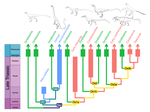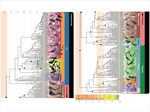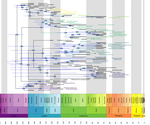David Černý
Researcher in phylogenetics and macroevolution
About
I am interested in the development, evaluation, and application of quantitative methods for the study of phylogenetics and macroevolution, using Bayesian statistics as an overarching framework and fossil as well as extant vertebrates as my primary model system. My current research projects include the evaluation of the log-rate log-interval (LRI) method for estimating rates of trait evolution, and using the fossilized birth-death model (FBD) to generate time-calibrated supertrees.
I’m also a co-developer of RevBayes, a multiplatform, open-source software package for Bayesian phylogenetics and related analyses. Most of my recent work has either been carried out in RevBayes or involved extending its code base. I’ve contributed new functionality, bug fixes, and enhancements to the software, in addition to performing code review and expanding its test suite.
In 2024, I completed my PhD in Geophysical Sciences at the University of Chicago, where I worked in the Slater Lab on fossil vertebrate phylogenetics and macroevolution. My previous research experience includes paleontological and ecological fieldwork in Poland and French Polynesia, a bioinformatics internship in the Kondrashov Lab at the Centre de Regulació Genòmica in Barcelona, Spain, and undergraduate research in the Alfaro Lab at UCLA.
Education
-
PhD in Geophysical Sciences, 2024
University of Chicago
-
BSc in Ecology, Behavior and Evolution, 2018
University of California, Los Angeles





